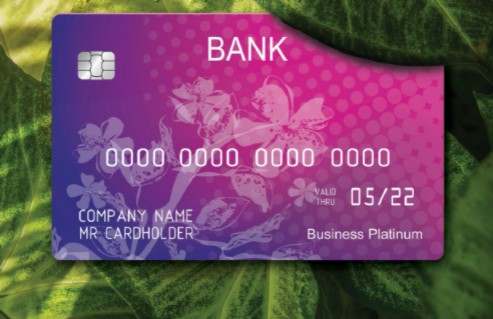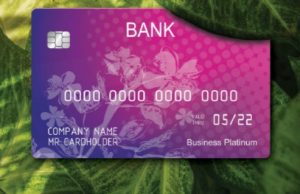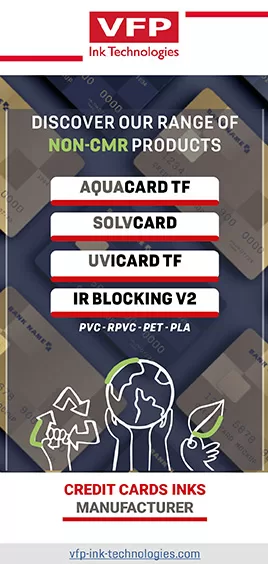
by Jennifer Kohlhepp | CM Magazine Featured
Eco-Friendly Cards: A Real Trend for the Payments Industry
 IN Groupe market analysis on eco-friendly cards market, presented by the experts of its componants brand SPS
IN Groupe market analysis on eco-friendly cards market, presented by the experts of its componants brand SPS
By Jorge Lara Villalobos, Marketing Manager, SPS
In spite of the fact that eco-friendly is not a new subject, we have seen over the last 20 years that consumers between the ages of 22 and 54 years old have increasingly embraced social causes such as helping reduce environmental impact. They seek products and brands that align with their values, and it is due to this fact that there is a real need in the card market for products that are less harmful to our planet.
However, product manufacturers and brands are struggling to keep up and adapt to this demand for eco-friendly products that has accelerated at a faster pace than the capacity of the industry to reply with a real ecological offer. On one side, there is a lack of commitment from governments to promote new laws and regulations to incentivize low environmental products or manufacturing processes and recycling and, on the other side, there is the issue of high costs and the complexity of developing eco raw materials to replace the current ones. On top of that, eco raw materials must not impact the quality, performance and finishing of the final products.
The fact remains that there is an ever-growing demand for eco-friendly products. During the last 18 months, we have witnessed an accelerated increase in people’s interest around the environmental impact of current linear production processes, which generally consist of the extraction and distribution of raw materials and their transformation into products that will later be used and finally dumped by consumers.
In this context, it seems that plastic pollution has become a trend in social networks. We see over the last three years, that there has been an increased number of tweets about plastic waste. Consumers are talking and acting more, and demand greater accountability from companies and governments.
In the banking industry, issuers know that credit/debit cards are not only used as a payment tool but also as a physical means to convey their identity and values. Issuing banks, as a result, are interested in sending the right message to their more purpose-driven cardholders and an eco-friendly payment card seems to be the right product to not only retain existing customers, but also to win new ones and achieve the long-awaited top-of-the-wallet effect.
The card manufacturing industry is indeed making a great effort to come up with the shortest time to market of an eco-friendly offer and at the same time being very careful in their messages to avoid being accused of greenwashing. Greenwashing is the process of creating a false impression by claiming or labeling products as “eco-friendly” or “environmentally friendly” without them being truly so. Many companies and organizations have found that the measurement of the carbon footprint of a product is a good instrument to validate eco-friendly claims. Some organizations, like ICMA and UL among others, have started to promote some programs in order to determine the environmental performance of the manufacturer’s card or to provide to card manufacturers an independent verification that products live up to their marketing claims respectively.
In the search to find the right strategy for an eco-friendly payment card, it is important to be aware of relevant indicators of plastic disposal like the ones published by *Great Britain’s Royal Statistical Society indicating that 79% of plastic produced on a yearly basis end ups in landfills, 11% is incinerated and only 9% is recycled. Based on this reality, it would be logical to aim for plastics that could be chloride free like PETG or aim to increase recycled PVC that would help to stop using first usage PVC. Other eco raw materials, that at a first glance seem to be attractive options, are the bioplastics like PLA or wood. However, what is the most suitable material in terms of cost while keeping the similar characteristics of the current plastic used in the banking industry?
If we make a brief analysis of these alternative materials, we can say, for example, that PETG is more expensive than traditional PVC, with similar attributes of PVC and already tested in banking cards. Reclaimed ocean plastics seem to be very appealing at first sight, but some inconveniences are attached to these materials due to the inconsistency in their composition making them a little difficult to handle. *PLA is three times the cost of PVC and derives from genetically modified crops requiring up to 2.2 KG of corn to manufacture 1 KG of it, the only part of the plant that’s used to make PLA is the kernel, which means everything else becomes agricultural waste as indicated in an article published in biosphereplastic.com. Recycled PVC needs to be mixed with some other components to obtain similar features as first-use PVC although technology is evolving very quickly improving greatly the ratio of recycled PVC/first-use PVC. Wood made from sustainably sourced FSC cherry wood could be another good option. However, it is still not clear if the carbon footprint to produce such material that can be used in payment cards has a lower value than that of the carbon footprint to produce PVC.
It is currently difficult to predict which eco-friendly material will predominate for use in payment cards, but according to a recent study published by ABI Research*, recycled PVC, chloride-free PETG and recycled PETG are the substrates to replace first-use PVC in the payment card market. For the moment, it appears that recycled PVC is the first material that has started to be used in the first commercial launches of an environmentally friendly payment card, which seems to be logical considering that most of the card manufacturing industry is based on the production of PVC bank cards.
* Great Britain’s Royal Statistical Society: https://advances.sciencemag.org/content/3/7/e1700782
* biosphereplastic.com https://www.biosphereplastic.com/biodegradableplastic/biodegradable-materials-around-the-world/polylactic-acid-creates-major-co2/
*ABI RESEARCH https://www.abiresearch.com/market-research/product/1033841-sustainable-materials-for-payment-cards/
About the Author: Jorge Lara is manager of Strategic Marketing Banking Products for SPS IN GROUPE. Prior to his current role, Jorge was director of EMV & Contactless product for Latin American and the Caribbean (LAC) region with Mastercard. During his 12 years tenure, Jorge steered Mastercard’s strategic initiatives for scaling adoption of contactless technology by ensuring aligning with digital payments conversion and by providing strategic advice, consultation and tactical support to financial institutions, local authorities and banking associations in several countries in LAC. He has more than 18 years of experience in the payment industry working in different international companies like Schlumberger, Axalto and G&D as product leader, system development manager and program manager.





